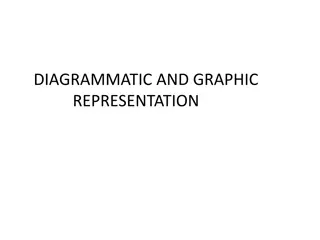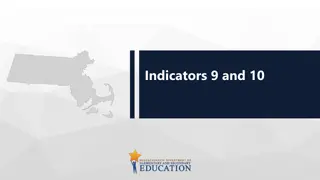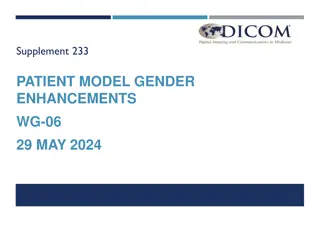
Effective Graphical Representation Methods for Frequency Distribution
Learn about graphical methods used to present quantitative data effectively through graphical representation such as histograms, frequency curves, and more. Understand how to construct histograms for equal and unequal class intervals with practical examples.
Download Presentation

Please find below an Image/Link to download the presentation.
The content on the website is provided AS IS for your information and personal use only. It may not be sold, licensed, or shared on other websites without obtaining consent from the author. If you encounter any issues during the download, it is possible that the publisher has removed the file from their server.
You are allowed to download the files provided on this website for personal or commercial use, subject to the condition that they are used lawfully. All files are the property of their respective owners.
The content on the website is provided AS IS for your information and personal use only. It may not be sold, licensed, or shared on other websites without obtaining consent from the author.
E N D
Presentation Transcript
Graphical Representation of Data
Introduction Graphical method used to present quantitative data in a simple, clear and effective manner Graphic representation of data, represent as a frequency distribution table The frequency distribution table of variables can be compared with the standard distribution, such as normal, binomial and poisson A graph is a visual form of representation of statistical data
Graphic representation of data The frequency distribution can be represented graphically in any of the following ways: i) ii) iii) Frequency curve iv) Cumulative frequency curve or OGIVE Histogram Frequency polygon
i) Histogram It is the most important method for displaying the frequency distribution Histogram is a set of variables bars whose area are proportional to the frequency represented To constructing the histogram, the variable should be taken on the horizontal axis (x-axis) and the frequencies displaying on the vertical axis (y-axis) Each class is represented by a distance which is always proportional to its class interval
i) Histogram When all the classes are of equal lengths, the heights of the rectangles will be proportional to the frequency of the Each rectangle represent the class interval distance as its width and the frequency distance as its height Histogram is two-dimensional where both the length as well as width are important, where a bar diagram is one-dimensional respective classes
i) Histogram The histogram can be constructed in two ways depending up class- interval: a) For distributions that have equal class intervals b) For distributions that have unequal class intervals
i) Histogram a) For distributions that have equal class intervals For example: Table 1 Class Interval 10 20 20 30 30 40 40 50 Frequency 10 20 30 20 40 30 20 10 0 10-20 20-30 30-40 40-50
i) Histogram b) For distributions that have unequal class intervals: For example: Table 2 Class Interval 10 20 20 40 40 70 70 110 Frequency 10 30 15 52 Class Interval Frequency Class Interval Frequency 10 20 10 60 70 5 20 30 30 40 15 15 70 80 80 90 13 13 40 50 5 90 100 13 50 60 5 100 110 13
i) Histogram Histogram 16 14 12 10 8 6 4 2 0 10-20 20-30 30-40 40-50 50-60 60-70 70-80 80-90 90-100 100-110
i) Histogram Exercise no. 5: Draw the histogram for Exercise no. 5: Draw the histogram for following frequency table following frequency table Class Interval 5 10 10 20 20 25 25 40 Frequency 10 30 12 42
i) Histogram - Exercise no. 5: Solution Exercise no. 5: Solution Table Histogram Class Interval Frequency 16 14 5 10 10 12 10 15 15 10 15 20 15 8 6 20 25 12 4 25 30 14 2 30 35 14 0 5-10 10-15 15-20 20-25 25-30 30-35 35-40 35 40 14
ii) Frequency Polygon ii) Divided Bar Diagram The frequency is divided into different components 8 6 Wheat 4 Rice Maize 2 0 1 2 3 4
Divided Bar Diagram Exercise no. 1 Exercise no. 1 ii) Crops Years 2005 2 2 2 2010 2 3 4 2015 2 4 2 2020 3 2 1 Wheat Rice Maize Divided BAR 10 Maize 8 6 Rice 4 Wheat 2 0 2005 2010 2015 2020
iii) Percentage bar diagram The length of the bar is kept equal to 100 and the divisions of the correspond to the % of different component Each component have different percentage 100% 80% Maize Rice Wheat 60% 40% 20% 0% 1 2 3 4
Percentage bar diagram - Exercise no. 2 Exercise no. 2 iii) Crops Years 2005 8 8 4 2010 4 8 8 2015 8 4 8 2020 4 4 12 Wheat Rice Maize 100% 80% % BAR 60% Maize Rice 40% Wheat 20% 0% 2005 2010 2015 2020
iv) Multiple bar diagram They are preferred whenever a comparison between two or more related variables is to be made The techniques of simple bar diagram can be extended to represented two or more sets of interrelated data in a diagram These diagrams facilitate the comparison of data Such data can be represented either by divided bar diagram, % divided bar diagram or multiple bar diagram
iv) Multiple bar diagram 6 Series 1 Series 2 5 Series 3 4 3 2 1 0 Variable 1 Variable 2 Variable 3 Variable 4
Multiple bar diagram - Exercise no. 3 Exercise no. 3 iv) Crops Years 2005 2 4 6 2010 3 5 7 2015 4 6 8 2020 4 5 7 Wheat Rice Maize Wheat Rice Maize 10 8 Multiple Bar 6 4 2 0 2005 2010 2015 2020
C) Pie diagram Representing discrete data of qualitative characters Data represent in a circle form Angle of the circles will be proportional to the frequencies or different components Pie diagram should be used on a % basis % can be presented by sector equal in size To construction a pie diagram, the data can be transposed in to the corresponding degrees on a circle
C) Pie diagram St Blood groups Number of persons Female 80 70 80 50 Male 70 50 40 70 Total 150 120 110 120 A B AB O Total 500 Step I: Calculate the % The % of blood group A = 30% (150 500)x100 B = 24% C = 22% O = 24%
C) Pie diagram Step II: Calculate the angle /degree The total angle of circle = 360 So, one % is equal to 3.6 (360 100) Therefore the corresponding value will be Angle for blood group A = 30x3.6 = 108 B = 24x3.6 = 86.4 C = 22x3.6 = 79.2 D = 24x3.6 = 86.4
C) Pie diagram Blood groups A B AB O Percentage 30 24 22 24 Degree 108 86.4 79.2 86.4 A B AB O
C) Pie diagram: Exercise no. 4 Exercise no. 4 Blood groups Number of persons Female 50 90 80 110 Male 70 90 40 70 Total 120 180 120 180 A B AB O Total 600
C) Pie diagram: Solution: Exercise no. 4 Exercise no. 4 Blood groups Pie Table Percentage Degree Pie Chart A 72 20 A B 108 30 B AB 72 20 AB O 108 30 O






















